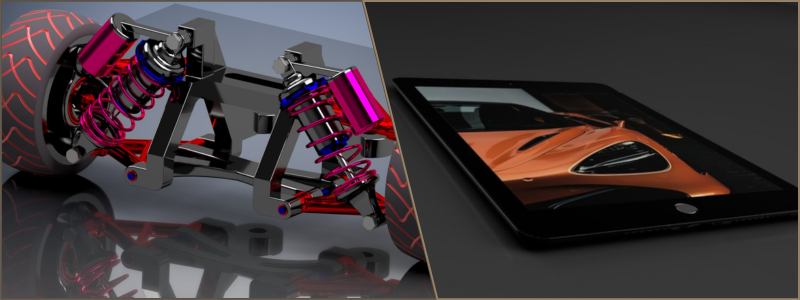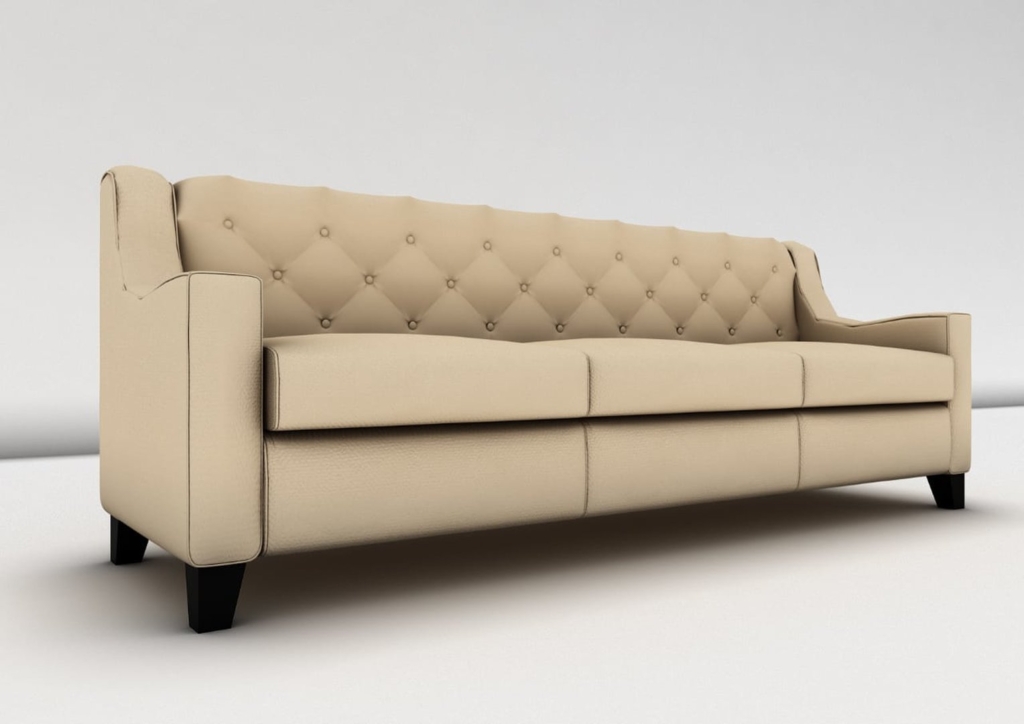The modern design industry is very fast-paced and always in a state of evolution, with increasing demands from clients for the realistic visualization of ideas before they manifest themselves. Architecture, real estate, interior design, and product development rely on the expression of ideas through the utilization of 3D rendering to gain stakeholders and seal deals.
Even though an in-house expert 3D rendering team appears perfect, outsourcing the same function to other organizations that specialize in it can save a lot and even produce better quality by being even more efficient. It is based on this fact that this comprehensive write-up addresses all the key reasons why a company undertaking design projects outsourcing for 3D rendering work is a cutting-cost move.
Cad Crowd is an industry leader connecting firms with the right professionals in 3D rendering, design, and engineering. In this article, we’ll share what we know about why you should outsource 3D rendering services and how it can help you achieve your design goals.
🚀 Table of contents
- Getting access to top-class talent and technology
- Competitive advantage
- Cost-effective project management
- Elimination of infrastructure investments
- Faster turnaround times
- Focus on core competencies
- Reduced overhead and operational costs
- Lower incidence of error
- Less training and development cost
- Scalability and flexibility
- Why save costs on 3D rendering services for design projects
- Conclusion
- How Cad Crowd can help
Getting access to top-class talent and technology
Rendering 3D is a specialty where great proficiency is required in various aspects, such as lighting, texturing, modeling, and animation. It is a challenge to hire and sustain top talent in-house as this is expensive, and it is hard to do so. Moreover, the creation of the latest rendering software and the maintenance of high-performance workstations would also exceed the budget of most firms.
Outsourcing 3D rendering services gives companies direct access to professionals who are very knowledgeable in their fields. Outsourcing partners usually hire experienced artists and technical staff, keeping up-to-date with the latest tools and techniques, which includes industry-standard software, such as 3ds Max, Blender, and V-Ray. This ensures high-quality outputs from design projects without the need for costly investments in training and equipment inside.
RELATED: 3D modeling vs. 3D rendering services
Competitive advantage
The product design industry is competitive, and companies need to provide the market with high-quality visuals to remain competitive. High-quality 3D renderings can be a deciding factor between winning and losing a pitch or project. Still, not all firms have the capital to produce high-level visuals in-house.
Outsourcing gives strategic advantages because it allows easy access to the best talent and technology without heavy investments. Good quality renderings improve presentations, marketing materials, and proposals for companies. This puts companies in a better competitive position in the marketplace by attracting more clients, bigger projects, and stronger brand reputation.

Cost-effective project management
Managing an in-house 3D rendering team is complex, from coordination of schedules to handling project revisions and getting the work done on time. All these management activities will consume time and resources, which could be better utilized in other business areas.
Outsourced rendering services have dedicated project managers who oversee the entire process of rendering. These managers ensure that there is effective communication, timely completion of projects, and satisfaction of the clients. Outsourcing simplifies the management of projects and reduces administrative costs for design firms, thereby allowing them to operate efficiently.
Elimination of infrastructure investments
High-quality 3D rendering requires powerful computing hardware, such as high-end GPUs, large amounts of RAM, and extensive storage capacity. In-house maintenance of such infrastructure is quite expensive, and hardware soon becomes obsolete as technology evolves.
Outsourcing partners invest in the latest infrastructure to deliver superior results. Companies outsourcing their rendering services can save a lot of money spent on purchasing, maintaining, and upgrading equipment. Thus, it saves capital expenditure, and firms can channel these resources to other strategic investments.
RELATED: Freelance 3D rendering or photography for architecture: which is better?
Faster turnaround times
Time is an essential factor in the competitive world of design projects. In-house teams may suffer from bottlenecks caused by multiple project commitments, limited staff, or outdated technology. These bottlenecks can cause the project timeline to be stretched, and this may create unhappy clients and lost business opportunities.
The outsourced 3D rendering services are mainly geared toward speedy turnaround times. The companies have larger teams and infrastructures to ensure efficiency, thus taking advantage of the speed of outsourced providers, the design firms will be able to hasten the delivery time of their projects so that they are completed within deadlines set by clients, establishing the reputation of being reliable and punctual. Quicker delivery also means more project increases and revenues.
Focus on core competencies
Excels at what it does best: design and interior planning, product conception, and client management. The time and resources spent in managing an in-house 3D rendering team can be distracting from its core competencies to the detriment of overall productivity and growth.
Outsourcing 3D rendering helps companies focus on core competencies and let experts take care of rendering tasks. This streamlined focus leads to better project management, improvement in the client relationship, and better quality of core services. Firms can operate more efficiently and effectively with the help of rendering task delegation.
Reduced overhead and operational costs
It is resource-intensive to operate an in-house 3D rendering team. It involves the cost of hiring specialized professionals, maintaining state-of-the-art hardware, and regularly updating software licenses to be on par with the rest. All of these come with heavy overheads over and above salaries. Overheads like office space, utilities, employee benefits, and equipment maintenance push operational costs even further.
Outsourcing also erases the greater portion of these overheads. The infrastructure and in-house talent is already in place within third-party 3D rendering companies. All the costs for which a design firm can only pay is to satisfy its requirements – a particular project, recurring requirement, thereby transforming the nature of fixed costs to variable costs, thereby allowing the company more flexibility in the management of its budget, yet it keeps overall spending efficient.
Lower incidence of error
Inaccurate or substandard 3D renderings sometimes cost a lot to revise, causing project delays and loss of clients. Quality assurance is basic to providing accurate visualizations that match project specifications. Sometimes, however, in-house teams can go wrong because of fatigue, lack of resources, or skill deficiencies.
Outsourcing to credible 3D rendering providers would ensure high-quality control. Reputable providers have rigid processes of quality assurance, which greatly reduce the chances of errors. Their experience with various kinds of projects and clients also enables them to anticipate common pitfalls and correct them in advance. This reduces the possibility of costly errors, hence preventing companies from unnecessary spending on revisions and corrections.
RELATED: Designing prototypes: 3D design services for inventors and companies

Less training and development cost
3D rendering technology keeps on changing; there would be a need to upgrade themself time after time. Training in-house people on the latest rendering techniques, tools, and software would also be an expensive yet cost-effective affair concerning the costs and time involved in training for materials, workshops, seminars, and software certification, which are more expensive in the short run.
Avoid all the recurring costs of continuing training by outsourcing to rendering service providers. The outsourced teams will be required to fund their own skills development and will normally be up to date with the latest methodologies. This way, design firms can enjoy leading-edge skills without the cost of continuing training and development.
Scalability and flexibility
Demand for 3D rendering services fluctuates with the project volume, client needs, and market conditions. Having an in-house team means companies have to keep paying salaries even during the slow period. On the other hand, an in-house team can struggle to work on multiple projects simultaneously during peak times, thus missing deadlines or compromising quality.
It offers a company scalability and flexibility in meeting fluctuating workloads. Design firms can scale up or down according to the needs of their 3D rendering based on their pipeline of projects. An outsourced team usually delivers high volumes of work within short cycles to maintain agility and competitiveness without cost inefficiency at lean times.
RELATED: How to outsource 3D rendering services for your company to visualization studios for 2025
Why save costs on 3D rendering services for design projects
Saving costs in 3D rendering services is a necessary factor to ensure efficient and profitable company design projects. Rich quality renderings can enhance your presentations and client approvals considerably, but without proper cost management, they would easily drain budgets. Optimization of rendering resources will enable more strategic allocation of funds to other aspects of the project, thus improving overall workflow efficiency.
Utilizing cost-effective strategies like outsourcing to skilled freelancers or employing cloud-based rendering platforms can reduce overhead expenses. Choosing the right software and rendering quality appropriate for the project’s needs also avoids unnecessary expenses. Additionally, clear project briefs help streamline revisions, preventing costly reworks.
Cost-effective 3D rendering doesn’t mean the compromise of quality; instead, it means making well-informed decisions regarding balancing between quality, speed, and budget. This ensures that the design project stays within the financial constraint while providing impressive visual results, thereby making it competitive and satisfying to clients in the ever-changing market.
Conclusion
A significant number of cost-saving benefits of 3D rendering services to the design firm are afforded by outsourcing. Overhead cost reduction, access to high-level talent, increased scalability, and project efficiency enable them to achieve results of exceptional quality without having to maintain an in-house team. Outsourcing partners thus afford flexibility, speed, and expertise to allow firms to compete in a dynamic marketplace while focusing on core competencies and achieving the best possible value for the clients.
How Cad Crowd can help
In today’s real world, where idealistic renderings often have to be a necessary part of a good project, a very savvy, cost-effective decision regarding the outsourcing of services of 3D rendering can be very positive in enhancing business growth and profitability. Cad Crowd is here to nudge you in the right direction to ensure you are working with only the best freelance 3D rendering services. Request your quote today.

